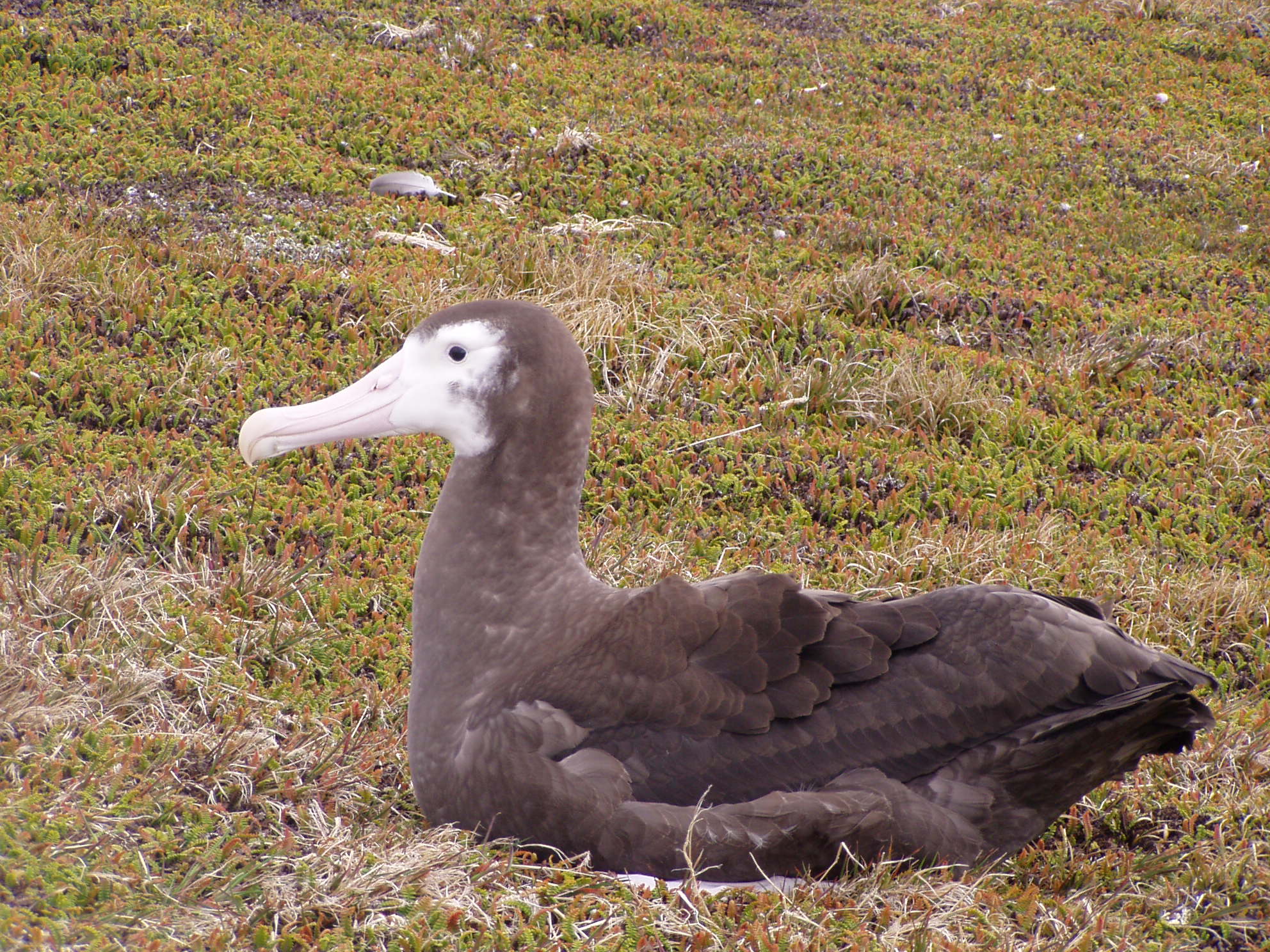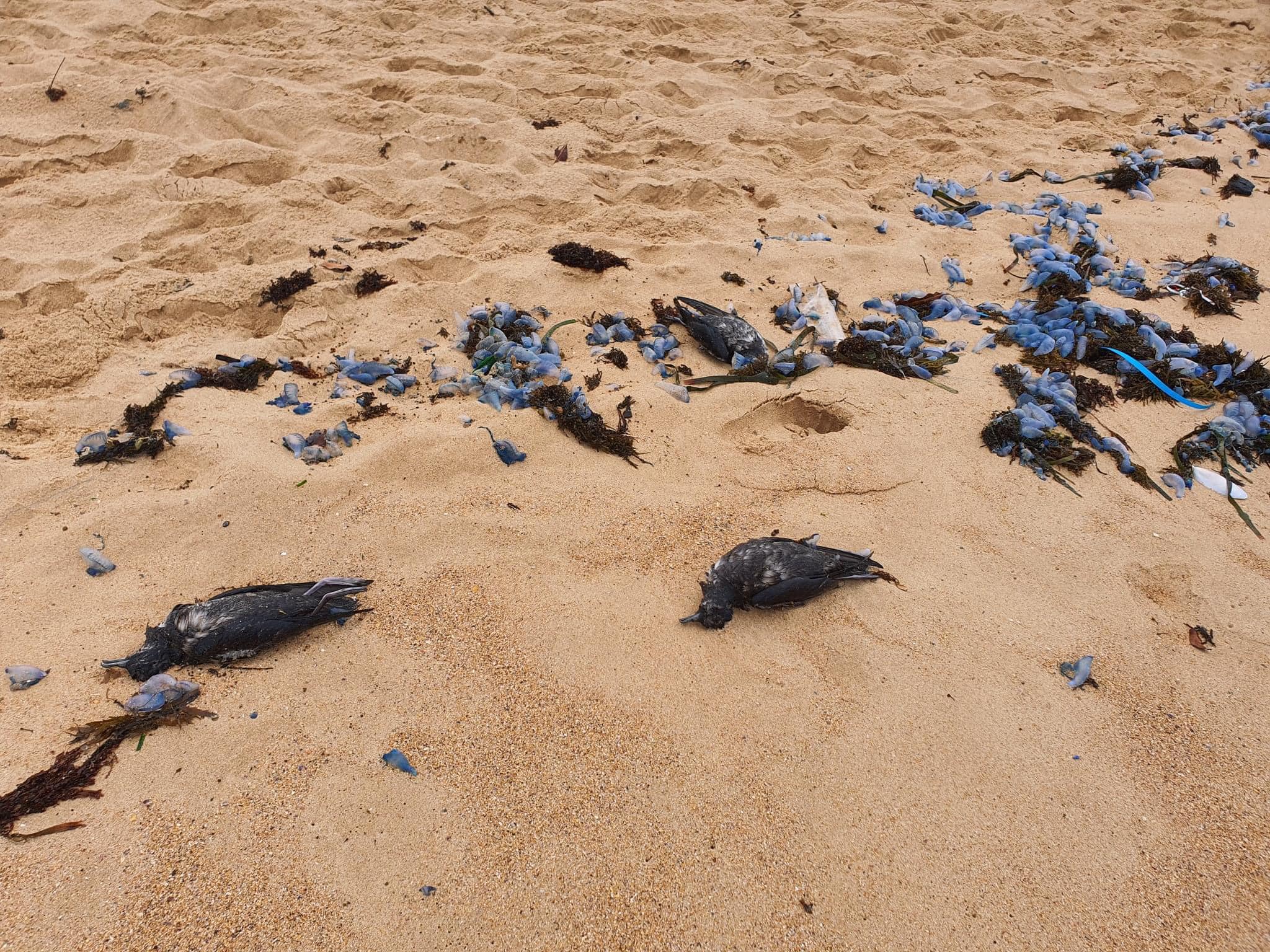 Ready to fledge: a healthy Wandering Albatross chick on Marion Island in December 2008, photograph by John Cooper
Ready to fledge: a healthy Wandering Albatross chick on Marion Island in December 2008, photograph by John Cooper
A Media Statement by the South African Department of Forestry, Fisheries and the Environment has announced that the High Pathogenicity Avian Influenza (HPAI) virus is suspected to have reached Marion Island, one of South Africa’s two sub-Antarctic islands in the southern Indian Ocean, and is possibly responsible for causing mortalities in at least three breeding seabird species.
After an initial suspected case in a Brown or Subantarctic Skua Catharacta antarctica in mid-September 2024, another five suspected cases were found in early November 2024, involving three Wandering Albatross Diomedea exulans chicks and two Southern Giant Petrel Macronectes giganteus adults.
“The situation is being closely monitored by the 11-field personnel overwintering on the island, who have been trained to recognise possible HPAI signs in birds and seals, and in the necessary monitoring and mitigation methods. They will be taking all precautions to ensure they do not spread the virus, and they are collecting information to assist with decisions about the appropriate response. The Department of Forestry, Fisheries and the Environment, the management authority for the Prince Edward Islands, has developed a Protocol for the Management of High Pathogenicity Avian Influenza in Seabirds together with the Western Cape Veterinary Services, marine ornithologists, marine mammal biologists, disease experts and colleagues overseas with similar experience, and will continue to work to monitor and hopefully limit the spread of the virus on the island,”
At least 58 Wandering Albatrosses, along with other seabird species, succumbed to avian flu on Bird Island in the South Atlantic during the 2023/24 austral summer (click here and here and references below). The new field observations from Marion Island, once confirmed, expand the spread of the virus a year later to ACAP-listed albatrosses and petrels breeding in the southern Indian Ocean.
References:
Banyard, A.C., Bennison, A., Byrne, A.M.P. et al. 2024. Detection and spread of high pathogenicity avian influenza virus H5N1 in the Antarctic Region. Nature Communications 15, 7433. doi.org/10.1038/s41467-024-51490-8.
Bennison, A., Adlard, S., Banyard, A. C., Blockley, F., Blyth, M., Browne, E., … Phillips, R.A. 2024. A case study of highly pathogenic avian influenza (HPAI) H5N1 at Bird Island, South Georgia: the first documented outbreak in the subantarctic region. Bird Study, 1–12. https://doi.org/10.1080/00063657.2024.2396563.
John Cooper, Emeritus Information Officer, Agreement on the Conservation of Albatrosses and Petrels, 15 November 2024
 A White-chinned Petrel at its burrow entrance on New Island, trail cam photograph by Falklands Conservation
A White-chinned Petrel at its burrow entrance on New Island, trail cam photograph by Falklands Conservation
 English
English  Français
Français  Español
Español  Out of its burrow and ready to go. The first Newell’s Shearwater fledges from within the Nihoku fence. Trail camara photograph by Pacific Rim Conservation
Out of its burrow and ready to go. The first Newell’s Shearwater fledges from within the Nihoku fence. Trail camara photograph by Pacific Rim Conservation Ready to fledge: a healthy Wandering Albatross chick on Marion Island in December 2008, photograph by John Cooper
Ready to fledge: a healthy Wandering Albatross chick on Marion Island in December 2008, photograph by John Cooper

